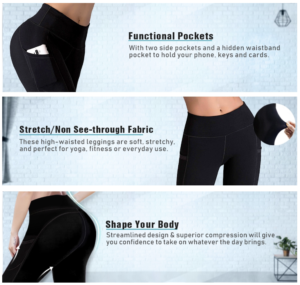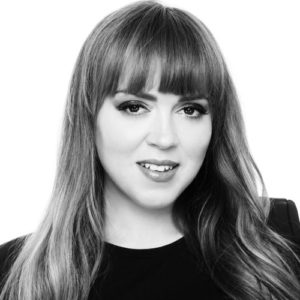 Who is Sylvia Stefanowicz?
Who is Sylvia Stefanowicz?
Sylvia has been a passionate entrepreneur all of her life. After graduating from London School of Economics in 2005, Sylvia joined HSBC in the commercial/corporate segment. She worked at HSBC for 13 years before leaving to start her own business venture, Bilbette. Bilbette are a specialist lingerie brand, with over 30,000 bras alone. She feels that her work-related success is due to her perseverance, focus and ‘can-do’ attitude.
1. ‘Clothing & Accessories is an ungated Amazon category, which means it is highly saturated with lots of products. Does this make it difficult to sell fashion items on Amazon?
Yes, it does but for other reasons too. Amazon isn’t necessarily seen as a marketplace of choice by fashion brands/designers. Similarly, customers may not always reach to the pages of Amazon for outfits.
And this, of course, is subjective. Because you have so many layers of fashion: fast fashion which is associated with cheap prices, lower quality and fast-changing designs. The opposite is slow fashion which is about ethics, sustainability and better quality. A more conscious customer wouldn’t turn to Amazon looking for a high-quality sustainable fashion brand. I feel that this gap is widening even more now with so many Chinese fast fashion factories entering this category.
Another reason is that I think it’s fair to say that in 2020 the B2B model is becoming redundant, whatever the category. A supplier is becoming a competitor and a direct seller, so automatically the saturation levels will be much higher than in the past, especially for ungated categorises.
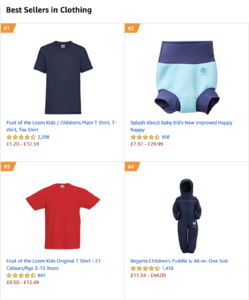
2. Do you think it’s better to sell Fashion items via FBA or self-fulfilled?
The decision of whether to go for an FBA or an FBM approach is very much about returns. Think about:
- The complexity of the product in terms of fittings (the more complex; the bigger the likelihood of a return),
- The type of a fashion product – lingerie where we have hygiene to think of means every return should be made non-resalable. Or shoes where it’s harder to identify whether they were worn or just tried on at home,
- The markets you are selling in. As an example, when ASOS entered Germany they experienced 70% returns on fashion vs 40% rate in the UK. This almost led to a profit warning situation.
So, all these factors have to be considered. You have to estimate which strategy will be cheaper for you to run, which offers better control of stock/cost of returns and their management. Economies of scale play a role here.
Don’t forget to build your returns cost into your pricing. When you’re selling on Amazon, it comes down to pure mathematics. If you sell via other channels, you can manage this in other ways too.
3. What is your number 1 tip for photographing fashion items to sell on Amazon?
This is the most important tip! Have your own high-quality photos. Don’t use photos from your suppliers or other sellers, you need to distinguish yourself. Professional photography doesn’t have to be expensive. It can always be taken in China if you are buying unbranded fashion in China. Show fashion on models, not just as flat product photography. There are many Amazon product photography services in China and they can be easily found on Alibaba too. When you book your fashion shoots, always do garments in bulk. It’s unlikely a photographer will hire a model and set up the studio just for 1 garment. That’s impractical and expensive.
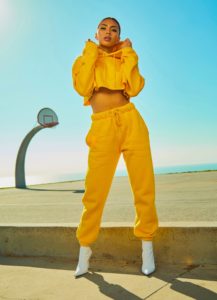
4. Research shows that most top-sellers in the ‘Clothing & Accessories’ category use Amazon’s A+ content. What is the benefit of this?
A+ content is where you can share your brand story, values, highlight features & benefits in a more visual and creative way. It offers a much better shopping experience for your customers, this, of course, can improve conversions and brand loyalty.
In fashion, there is a big move from product photography to interactive product videos. It’s a much stronger marketing tool and if possible, should be applied as A+ content. Not many sellers do it yet.
5. Returns are much higher in fashion categories, with an average return rate between 20 – 40%. Do you have tips for minimising returns?
Keep it simple, start with fewer variations that have a higher likelihood of conversion (i.e. more popular sizes, base colours etc). Understand your audience. Your sizing needs to match local demand. Don’t underestimate the power of local silhouette types and how this should be researched for product popularity.
My customers in Poland are very differently built to customers in the USA or France. Offer as much information on product colours, functions and measurements. But remember that most customers don’t actually follow size charts so you have to find a way to communicate this invaluable information in some engaging way. Use pictures that show real shape & colour of garments. Too much editing may not work in your favour. Although you will attract the audience to buy, you will also make them feel let down once goods are received. The cost of bad reviews, returns & your reputation is much higher than not posting that product in the first place.
As a lingerie seller, our overall returns rate is pretty fantastic. It peaked at 12% last year (industry average 40% and higher for bras) but we have managed to keep it this low due to adopting different operating models in the business (B&M, eCommerce, B2B wholesale) and running a number of initiatives to prevent returns from online customers. For example, our customer contact & advice for bra purchases in impeccable, we are a bra-fitting certified business, we also have developed our own online bra size calculator for customers to use before the purchase.
6. In your experience is it easier to sell branded or unbranded fashion items on Amazon?
Well, you can look at this from 3 levels:
- Unbranded fashion (no customisation whatsoever)
- PL fashion (not your designs but you customise some elements/put your label on etc)
- Branded fashion at higher price & better quality (your own designs, materials & production)
With unbranded fashion you are going into price wars, that’s not where you want to be. By having your own PL, you have better control over your product and sales. At the same time, if you are a proper fashion brand owner with your own designs and you are targeting a more sophisticated customer with bigger spending power – Amazon may not be the best eCommerce place for you to sell on.
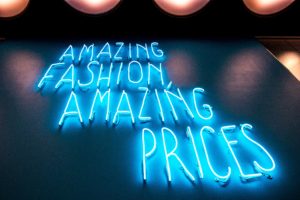
7. In terms of scalability, what options are available to fashion sellers who want to sell across Europe?
Test your concept, test your market, understand each market well by STARTING SMALL and adapt to its customer preferences as you go along. MOQs aren’t small in fashion, you have to accommodate sizes, styles and colours. A small production is usually 3-5k pcs that you have to commit to. So, be careful with volume, especially if you’re buying unbranded goods in China or other locations that are easily accessible to other sellers. Find out if your supplier is also selling directly on Amazon or other marketplaces. I can’t emphasise enough how big this problem is at the minute.
I have seen so many inexperienced fashion sellers that crash and burn very quickly: placing high volume orders on styles or sizing that doesn’t sell, this turns into illiquidity, high levels of returns if quality/fitting isn’t good and ultimately a write off.
I say start small on volume but THINK BIG in terms of channels that are available in Europe for fashion brands. Don’t restrict yourself to Amazon alone. Attend trade shows, speak with fashion buyers, try pop-ups if you can, consider collaborations with local brands, be active on social media and talk to other eCommerce platforms such as Asos, Zalando, Pret a Net Porter which are specialists in the niche and may attract more suitable customers to your brand.
And, of course, your own website is a must in more than 1 language, ability to take cross border payments, be able to offer customers Europe-wide fulfilment options.
Good luck!
Interested in growing your Apparel brand on the Amazon marketplace? Whether you need help with PPC, keyword research or A+ content design, here at Courageous we can help! Drop us a message and let’s have a chat?


